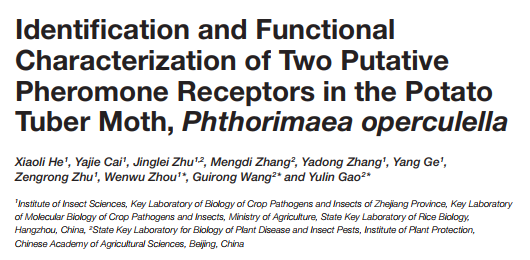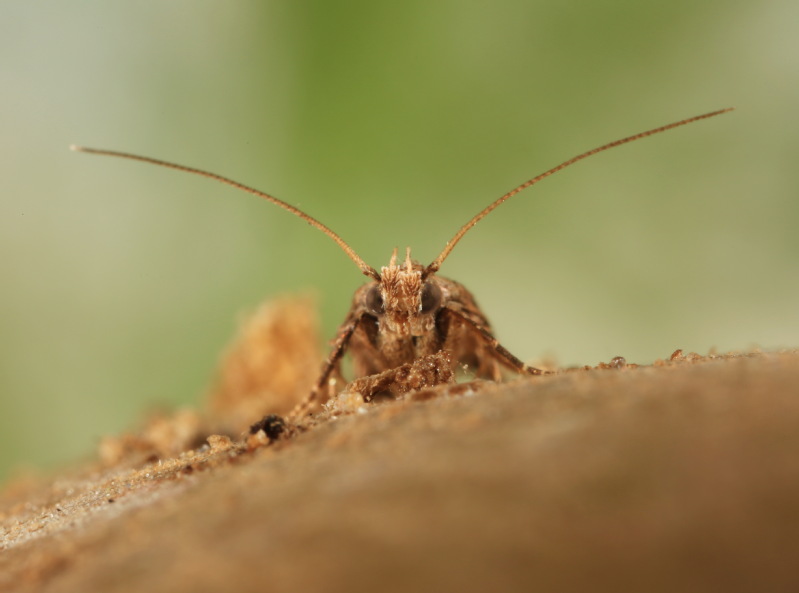Frontiers in Physiology,
2021, Vol.11, 618983

Pheromones are a kind of signal produced by an animal that evoke innate responses in
conspecifics. In moth, pheromone components can be detected by specialized olfactory
receptor neurons (OSNs) housed in long sensilla trichoids on the male antennae. The
pheromone receptors (PRs) located in the dendrite membrane of OSNs are responsible
for pheromone sensing in most Lepidopteran insects. The potato tuber moth Phthorimaea
operculella is a destructive pest of Solanaceae crops. Although sex attractant is widely
used in fields to monitor the population of P. operculella, no study has been reported on
the mechanism the male moth of P. operculella uses to recognize sex pheromone
components. In the present study, we cloned two pheromone receptor genes PopeOR1
and PopeOR3 in P. operculella. The transcripts of them were highly accumulated in the
antennae of male adults. Functional analysis using the heterologous expression system
of Xenopus oocyte demonstrated that these two PR proteins both responded to (E, Z)-
4,7–13: OAc and (E, Z, Z)-4,7,10–13: OAc, the key sex pheromone components of
P. operculella, whilst they responded differentially to these two ligands. Our findings for
the first time characterized the function of pheromone receptors in gelechiid moth and
could promote the olfactory based pest management of P. operculella in the field.

Photo by Dr. Runzhi Zhang